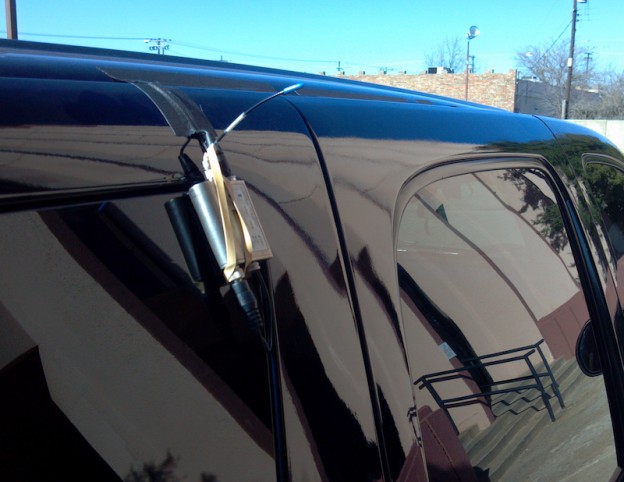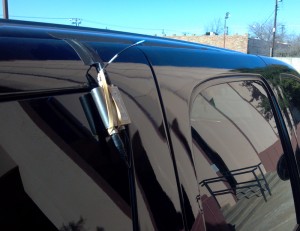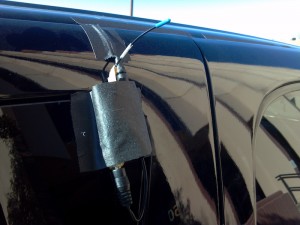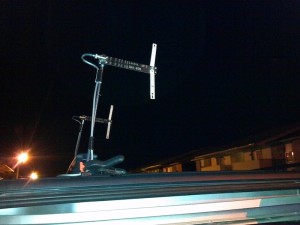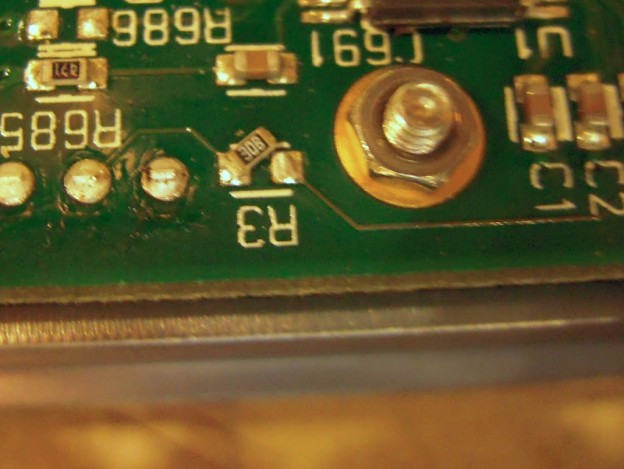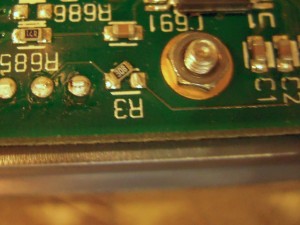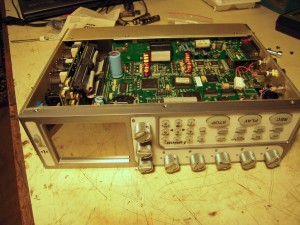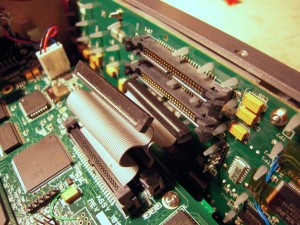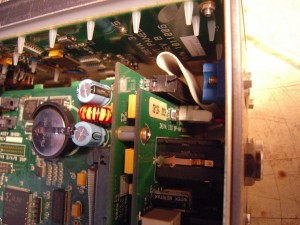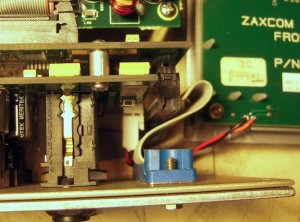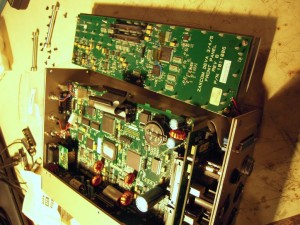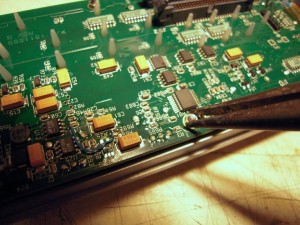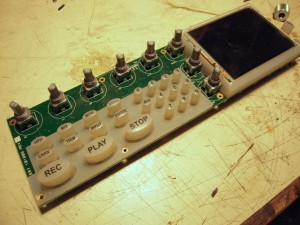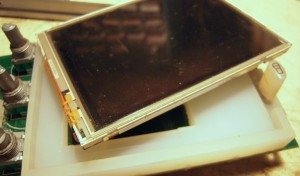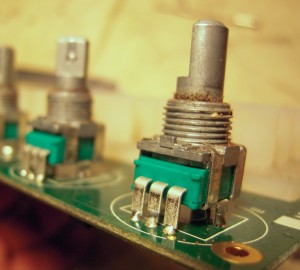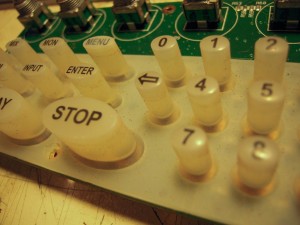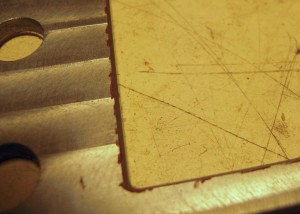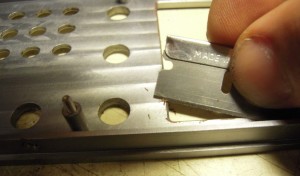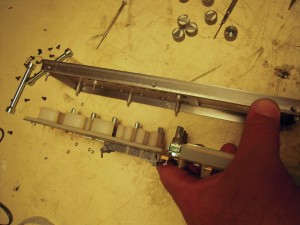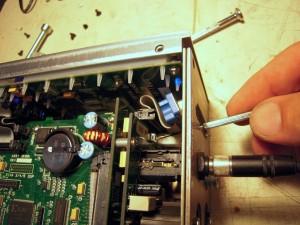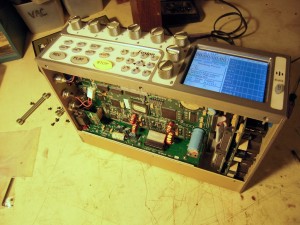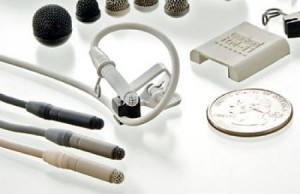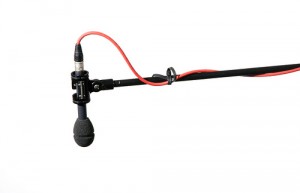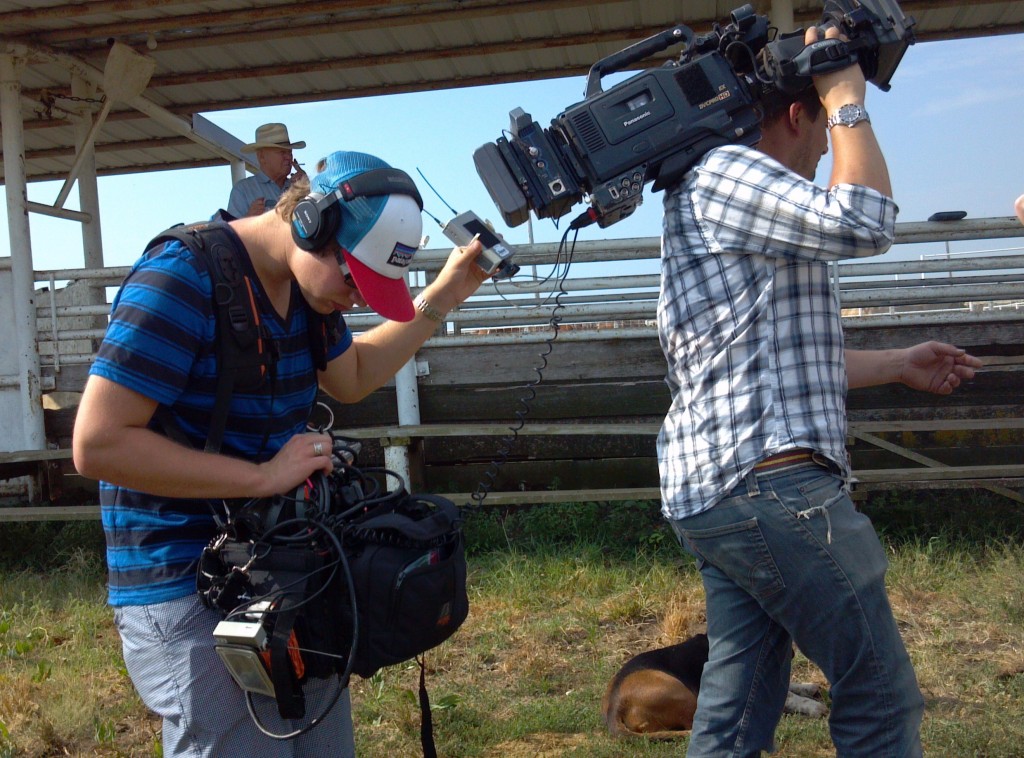Particularly regarding the Instrumentation Nagra SJ, an audiophile client was asking me what made the Nagra sound “special.” The SJ has “extended frequency response” to allow for measurment of vibrations and supersonic artifacts. Does it sound better? Is it the amplifier design?
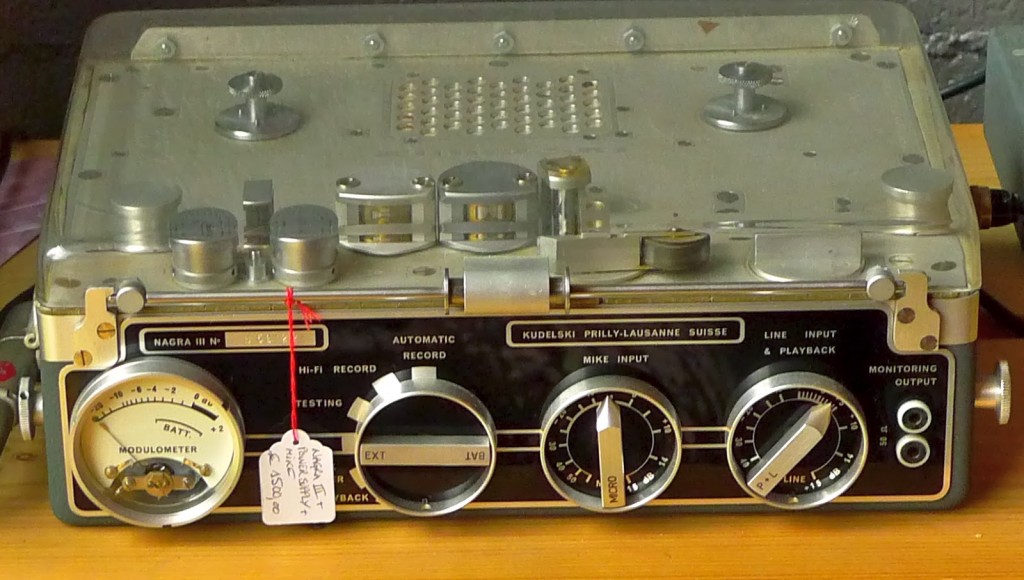
This 1960 Nagra III has unusual head shielding. Also there is no tone generator or BA (before/after) switch.
The SJ is not necessarily going to sound better. The SJ recording system did not include the same pre-distortion tricks that are employed in the audio Nagras. As you go up in record level, saturation and non-linearity increase. Pre-distortion served maintain that linearity. Otherwise, the SJ has NAB/CCIR record and playback EQ like any other Nagra. The head gaps on the SJ’s were narrower, to allow for higher frequency recording and playback at 15ips. The specifications have the response at 35khz at 15ips. ….Nagras were often built to order, with unique circuitry combinations based on what the individual customer needed. Along with circuit improvements/changes done at the factory, (many undocumented) there’s hundreds of different Nagra configurations. There were even Nagras built without a front meter or input level controls, just a blank panel (Nagra IV-ML) These days, every Nagra I encounter is different in some way from the norm.
The Nagra playback amplifiers are simple, discrete transistor designs. I’ve had clients who own outboard tape head pre-amps they’ve paid $4000 for, like the “King Cello” preamp, so they want the outputs of the heads available on the side panel of the Nagra. For example see http://www.reeltapes.net/kingcello -one of these expensive preamps.
Using the Nagra in a home music playback environment goes beyond the sound of the internal amplifiers. Users also appreciate having a very unique, professional, portable recorder. Stereo Nagras sold back in the 80’s for around $10,000. The build quality is remarkable, with no stamped parts, only machined aluminum/stainless steel parts. The functionality and durability were designed to withstand constant use in extreme environments and temperatures. The servo motor speed control can maintain perfect speed while the recorder is dropped to a table, or while the user is running on foot with the recorder on the shoulder. The tape tension mechanics are ingenious, continually self-adjusting tape tension during transport operations. The aesthetic design is a direct reflection of Kudelski’s sensibilities, from the unusual dual-needle meter, to the use of excessive panel labeling. Kudelski’s electronic designs were not complex, but all component values, tolerances and other characteristics were carefully regulated. All transformers and inductors (using toriod cores only) are wound entirely in-house. All fasteners are made of stainless steel. It is a laboratory-grade instrument that found its primary home in the alternative universe of motion picture production. That the film art-form once required such elegant, yet precision equipment is part of the Nagra’s allure. -by Pete Verrando www.txsound.com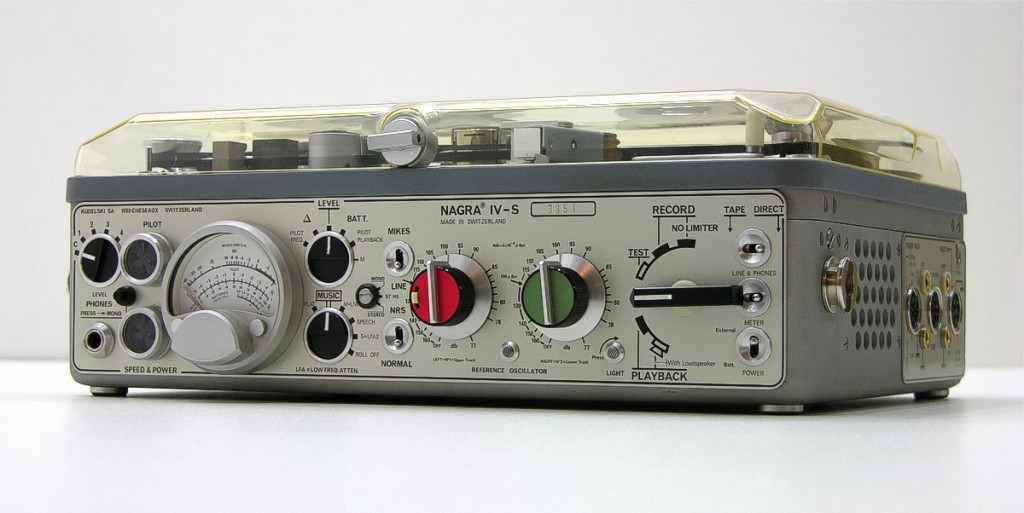

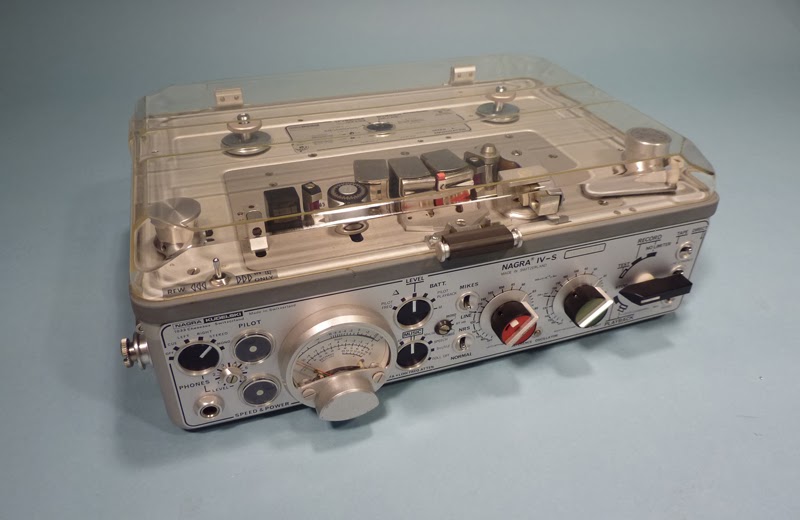
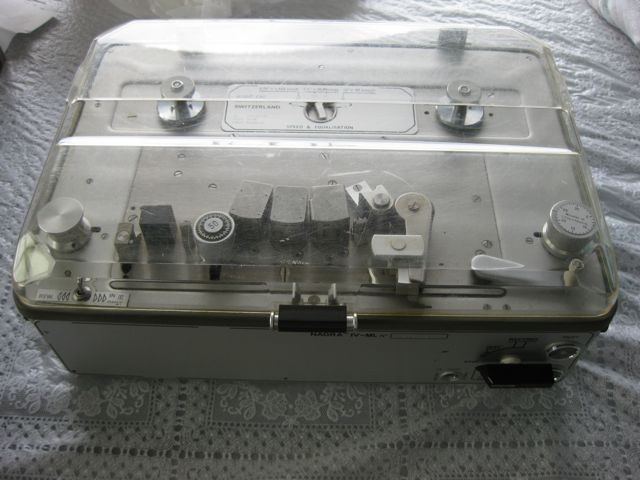
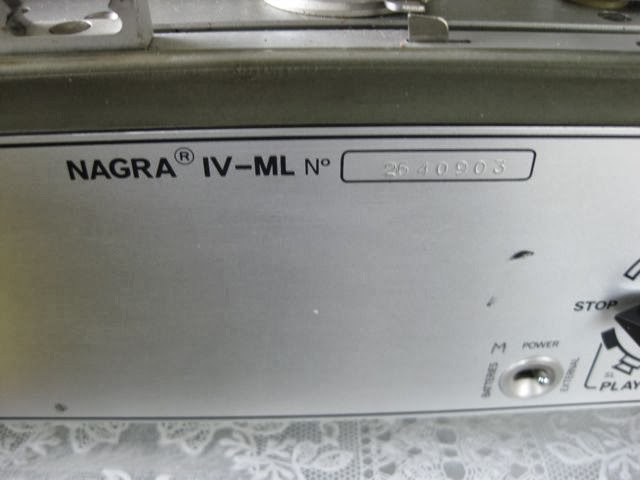
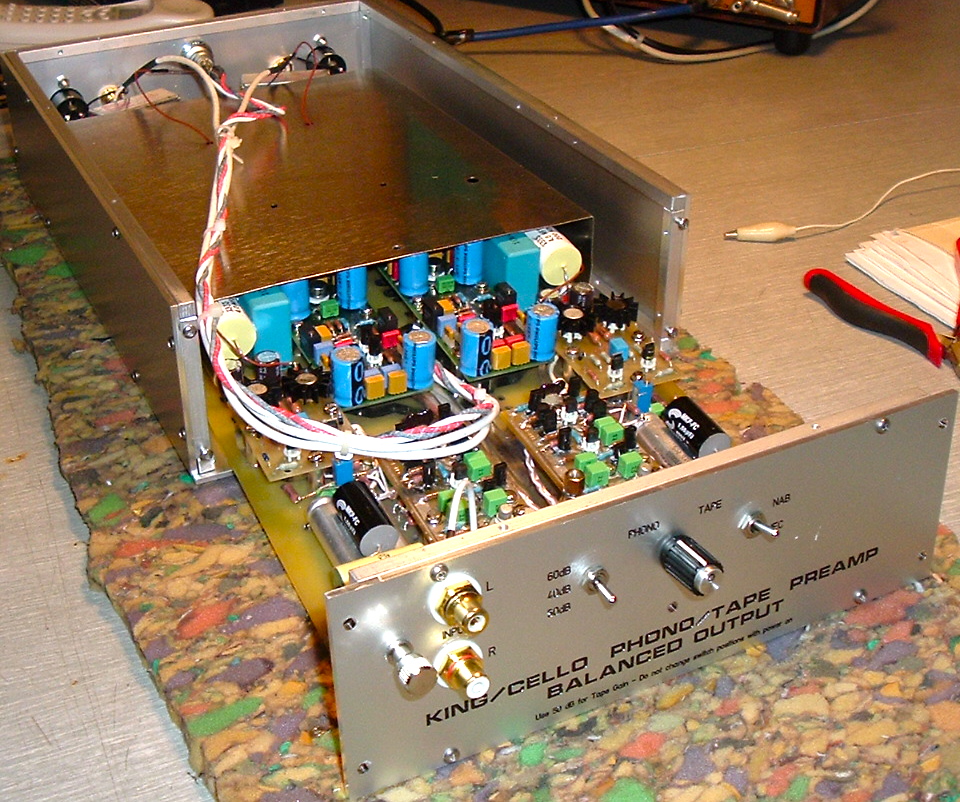
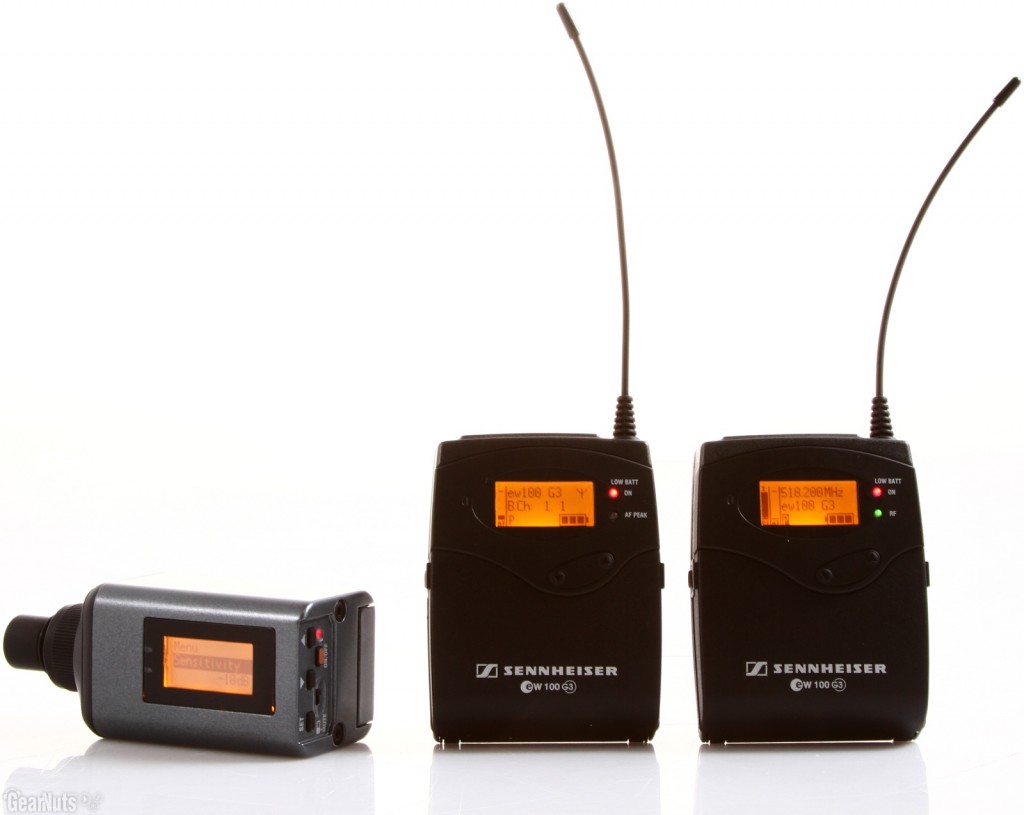
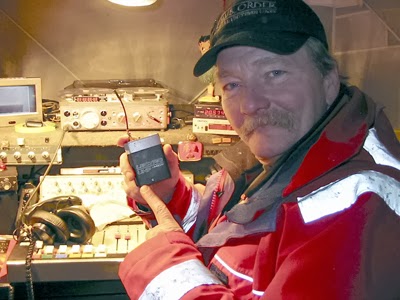
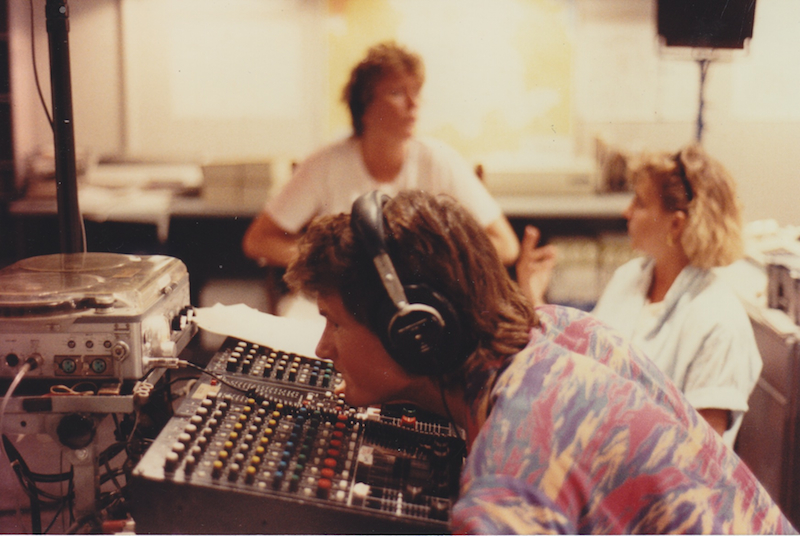



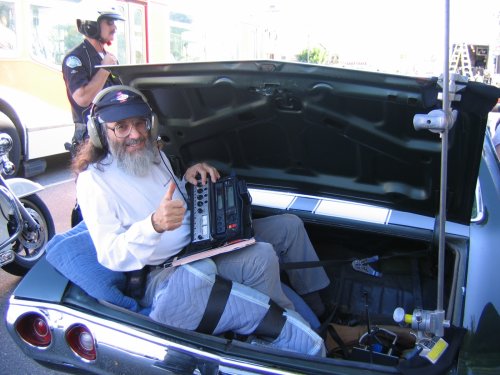
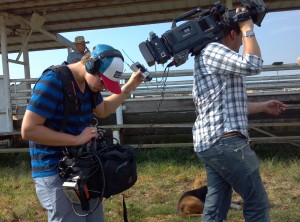
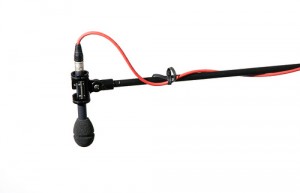
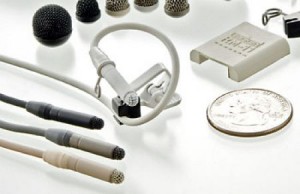 Ever wonder why sound mixers record and interview with both a lavalier mic and a boom microphone? The standard producer request, whenever an interview is recorded for television: Boom channel 1, lav channel 2, or visa-versa. Why 2 microphones for one sound source? The answer runs a little deeper than you may think. 20 or 30 years ago, 2 mics for a single interview was not done. The sound recordist chose his weapon, a lav or a boom, and recorded with that. The producer asked no questions. There was only one, recordable mono track anyway! Back in the news-film, documentary days, or anything that preceded video, the audio went to the mono Nagra track, or the single audio channel on whatever sound amplifier (Auricon, Cinema Products, etc) was driving a sound-on-film system. Not only were two mics unnecessary, there weren’t two audio tracks for two mics. Eventually, Two tracks of audio became available when 3/4” u-matic, stereo Nagra, or 1” field recording came into being. Yet two mics for a single-person interview was still hardly contemplated. Enter the days of Tabloid and Reality television. And, the need for low-cost programming to fill 80 channels of cable/satellite TV. The small army of production mixers across the US, in their lofty, revered, hard-earned union positions, were no longer enough in number to meet the demand for the forthcoming tidal wave of cheap television. However, there were plenty of young, inexperienced crew people flooding into the production work force, many never having picked up a boom pole or lavalier mic. They worked for cheap, learned by trial and error, clipping lavs on collars, happily chasing around cameras with their little mixers. Recording interviews with whatever audio gear the cameraman owned, or was thrown in the back of the truck. You can imagine what came next. Horrible audio came flooding into the edit bays. Poorly cued booms, lavs placed too low or too high, or no mic at all- when the new guy forgot to switch from the camera mic! If a mic battery died, or a location was noisy, the editor got what he got- 1 channel of crappy audio from one mic, recorded by a beginner. It didn’t take long for word to come down on high. Make those jobs idiot-proof, because we’ve got an army of idiots recording our field audio! Thus came the new protocol- record lavalier on 1 channel, and boom on the other. In Post, now we can choose the less horrible of the two! The senior sound guys balked- they knew how to get good interview audio with one mic, and no memo from above was going to tell them how to do the job. Regardless, the protocol stuck, and is still with us today. I don’t begrudge the method at all. Today, having both mics going makes sense in a fail-safe kind of way- most of the time. Also, for fun, we get to A/B our boom and lavs during the interview. The on-set mentality is: Get it right, get it in spades, and if you can, postpone making a decision about anything. Works for me! All I ask is: Please, Mr Editor, pick one or the other, and don’t mix the two down to mono! – by Pete Verrando
Ever wonder why sound mixers record and interview with both a lavalier mic and a boom microphone? The standard producer request, whenever an interview is recorded for television: Boom channel 1, lav channel 2, or visa-versa. Why 2 microphones for one sound source? The answer runs a little deeper than you may think. 20 or 30 years ago, 2 mics for a single interview was not done. The sound recordist chose his weapon, a lav or a boom, and recorded with that. The producer asked no questions. There was only one, recordable mono track anyway! Back in the news-film, documentary days, or anything that preceded video, the audio went to the mono Nagra track, or the single audio channel on whatever sound amplifier (Auricon, Cinema Products, etc) was driving a sound-on-film system. Not only were two mics unnecessary, there weren’t two audio tracks for two mics. Eventually, Two tracks of audio became available when 3/4” u-matic, stereo Nagra, or 1” field recording came into being. Yet two mics for a single-person interview was still hardly contemplated. Enter the days of Tabloid and Reality television. And, the need for low-cost programming to fill 80 channels of cable/satellite TV. The small army of production mixers across the US, in their lofty, revered, hard-earned union positions, were no longer enough in number to meet the demand for the forthcoming tidal wave of cheap television. However, there were plenty of young, inexperienced crew people flooding into the production work force, many never having picked up a boom pole or lavalier mic. They worked for cheap, learned by trial and error, clipping lavs on collars, happily chasing around cameras with their little mixers. Recording interviews with whatever audio gear the cameraman owned, or was thrown in the back of the truck. You can imagine what came next. Horrible audio came flooding into the edit bays. Poorly cued booms, lavs placed too low or too high, or no mic at all- when the new guy forgot to switch from the camera mic! If a mic battery died, or a location was noisy, the editor got what he got- 1 channel of crappy audio from one mic, recorded by a beginner. It didn’t take long for word to come down on high. Make those jobs idiot-proof, because we’ve got an army of idiots recording our field audio! Thus came the new protocol- record lavalier on 1 channel, and boom on the other. In Post, now we can choose the less horrible of the two! The senior sound guys balked- they knew how to get good interview audio with one mic, and no memo from above was going to tell them how to do the job. Regardless, the protocol stuck, and is still with us today. I don’t begrudge the method at all. Today, having both mics going makes sense in a fail-safe kind of way- most of the time. Also, for fun, we get to A/B our boom and lavs during the interview. The on-set mentality is: Get it right, get it in spades, and if you can, postpone making a decision about anything. Works for me! All I ask is: Please, Mr Editor, pick one or the other, and don’t mix the two down to mono! – by Pete Verrando 